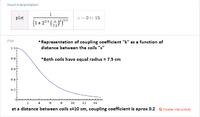kishan89
Newbie level 3
Hi friends
Well iam working on a project wireless power transfer for battery charging of electric vehicle, i would like to simulate the resonante inductive coils (series or parallel resonance condition) with MATLAB simulink software i tried with mutual inductance block i am getting very less efficiency but in various literature they got up to 90% efficiency(in MATLAB simulink). please help me how to develop inductive coupling in MATLAB simulink. Please help me in developing of 1KW resonant inductive power transfer for battery charging in MATLAB SIMULINK with an output voltage of 24 volts. Please help how to develop it MATLAB Itried with mutual inductance block but iam not getting properly so please kindly help me in this it will be a great help thank you in advance.
Well iam working on a project wireless power transfer for battery charging of electric vehicle, i would like to simulate the resonante inductive coils (series or parallel resonance condition) with MATLAB simulink software i tried with mutual inductance block i am getting very less efficiency but in various literature they got up to 90% efficiency(in MATLAB simulink). please help me how to develop inductive coupling in MATLAB simulink. Please help me in developing of 1KW resonant inductive power transfer for battery charging in MATLAB SIMULINK with an output voltage of 24 volts. Please help how to develop it MATLAB Itried with mutual inductance block but iam not getting properly so please kindly help me in this it will be a great help thank you in advance.

